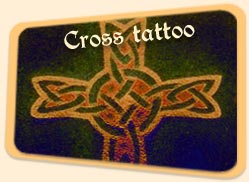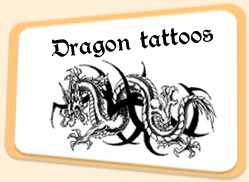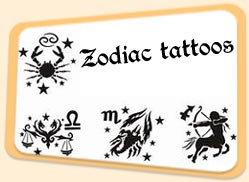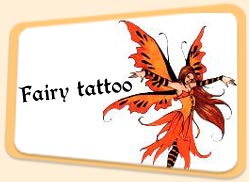Infections can occur in new tattoos, especially without appropriate after care. Some people also experience allergic reactions to tattoo inks. Although the pigments used may have U.S. Food and Drug Administration (FDA) approval for other purposes, the FDA does not regulate tattoo inks. Finally, some people experience pain or burning during magnetic resonance imaging (MRI) examinations because of metallic pigments. Some doctors have also reported interference and distorted MRI images from permanent make-up pigments.
In addition, most states place restrictions on whether people who have tattoos can donate blood. Because of the danger of hepatitis, the American Red Cross will not accept blood from someone who has been tattooed in the past year unless the tattoo parlor is state-regulated. Most states do not regulate tattoo parlors. [Source: American Red Cross]
Tattoo professionals use rules known as universal precautions to prevent the spread of illnesses during tattooing. These precautions are part of the Bloodborne Pathogens Rule issued by the U.S. Environmental Protection Agency (EPA). The same rules apply to hospitals and doctors' offices. The CDC is a good resource for information about universal precautions.
 Precautions for tattoo parlors include glove use, sterilization and covering bottles and tools. |
Other precautions specific to tattooing include:
- Checking gloves for pinhole tears during tattooing, since petroleum-based ointment erodes latex
- Pouring ink in advance, using clean tissue to open ink bottles during tattooing and preventing nozzles from touching contaminated surfaces
- Patting tubes dry after rinsing during color changes - never blowing excess water from them
- Spraying liquid soap into a tissue, not directly onto bleeding area, since blood can become airborne when the spray hits it
- Giving pens used for drawing on the skin, which should be medical grade and sterile, to the client
- Wash hands thoroughly and often.
- Inspect hands for cuts or sores and cover them with bandages.
- Remove hangnails and keep nails short to prevent punctures to gloves.
- Refrain from tattooing when experiencing lesions, dermatitis or allergic reactions.
Laws require minors to have a parent's permission to get a tattoo. So, some adolescents get tattoos from friends or amateurs, who use makeshift tools like pens and paper clips with little if any sanitary precautions. This is extremely dangerous, since proper equipment and sanitary measures protect people from disease and infection.









 Over the past few years Cross tattoos seem to be getting more and more popular. Though it is a matter of debate but one thing is certain that Cross tattoos do carry some significance to a person who bears the Cross symbol in the form of Cross tattoos. The Celtic cross is an example in this regard. For thousands of people the Celtic cross has been a symbol of history and past. The Celtic cross tattoos are the most important cross tattoo designs. It is a symbol of faith and heritage to a large number of people through out the world. You can find a variety of cross tattoo designs on a number of tattoo sites.
Over the past few years Cross tattoos seem to be getting more and more popular. Though it is a matter of debate but one thing is certain that Cross tattoos do carry some significance to a person who bears the Cross symbol in the form of Cross tattoos. The Celtic cross is an example in this regard. For thousands of people the Celtic cross has been a symbol of history and past. The Celtic cross tattoos are the most important cross tattoo designs. It is a symbol of faith and heritage to a large number of people through out the world. You can find a variety of cross tattoo designs on a number of tattoo sites. One of the most popular tattoo designs, dragon tattoos are a kind of rage today. Almost every third person out of ten wants to sport a dragon tattoo. There are two main types of dragons, the eastern dragon and the western dragon. The eastern dragon is seen as compassionate, signal of good fortune, benevolent and harbinger of fertility whereas the western dragon is infamous for its wicked character, destruction of villages and its greed for wealth.
One of the most popular tattoo designs, dragon tattoos are a kind of rage today. Almost every third person out of ten wants to sport a dragon tattoo. There are two main types of dragons, the eastern dragon and the western dragon. The eastern dragon is seen as compassionate, signal of good fortune, benevolent and harbinger of fertility whereas the western dragon is infamous for its wicked character, destruction of villages and its greed for wealth. Zodiac symbols make very popular tattoo designs. Zodiac tattoos made as Zodiac tribal tattoos or Zodiac Celtic tattoos are also very popular. Designs of the Zodiac combined with other design elements such as flowers, hearts, skulls, crosses, fairies/fairy, suns, moons, and stars make splendid Zodiac tattoo designs. Zodiac tattoo designs are available in different styles and in many colors like red, orange, yellow, green, blue, purple, violet, as well as in black and white.
Zodiac symbols make very popular tattoo designs. Zodiac tattoos made as Zodiac tribal tattoos or Zodiac Celtic tattoos are also very popular. Designs of the Zodiac combined with other design elements such as flowers, hearts, skulls, crosses, fairies/fairy, suns, moons, and stars make splendid Zodiac tattoo designs. Zodiac tattoo designs are available in different styles and in many colors like red, orange, yellow, green, blue, purple, violet, as well as in black and white. Another tattoo design which is very popular is the fairy tattoo. Fairies presented as fairy tribal tattoos or fairy Celtic tattoos are absolutely popular with tattoo lovers. Designs of fairies are amalgamated with many other elements to give the fairy tattoos numerous looks. Fairy designs can be combined with flowers, hearts, crosses, glitter, suns, moons, stars and other fantasy themes to get more fairy tattoos. The fairy tattoos are also available in different colors like red, orange, yellow, green, blue, purple, violet, as well as in black and white.
Another tattoo design which is very popular is the fairy tattoo. Fairies presented as fairy tribal tattoos or fairy Celtic tattoos are absolutely popular with tattoo lovers. Designs of fairies are amalgamated with many other elements to give the fairy tattoos numerous looks. Fairy designs can be combined with flowers, hearts, crosses, glitter, suns, moons, stars and other fantasy themes to get more fairy tattoos. The fairy tattoos are also available in different colors like red, orange, yellow, green, blue, purple, violet, as well as in black and white.